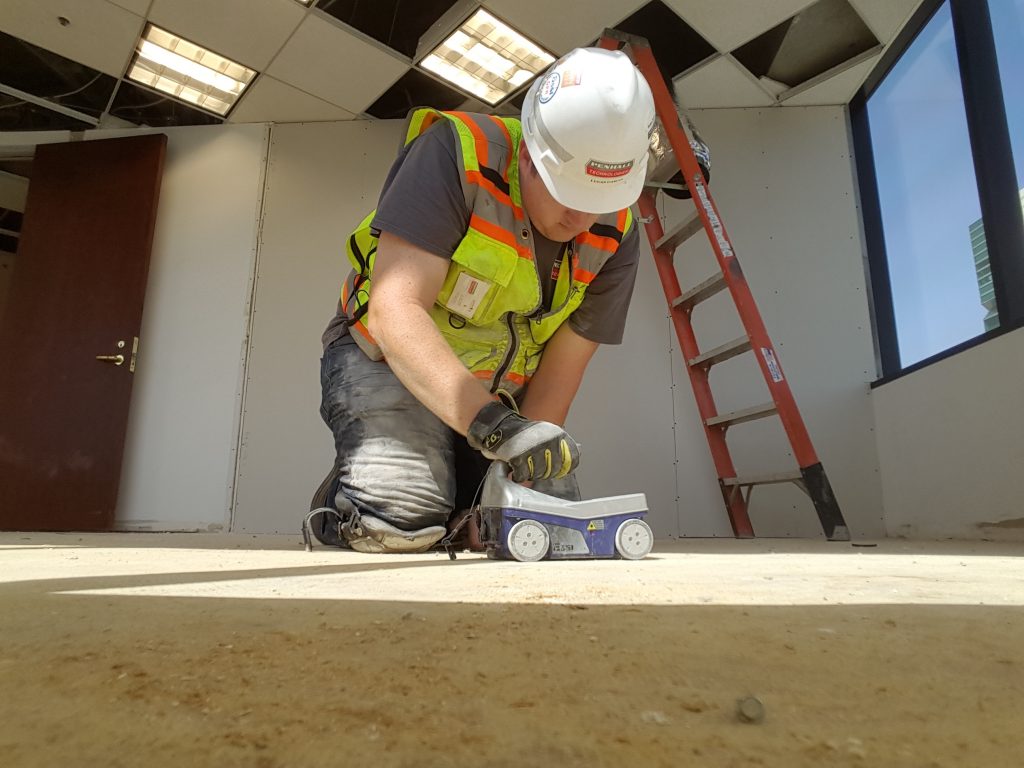Boost Construction Safety And Security with Specialist Concrete Scanning
Boost Construction Safety And Security with Specialist Concrete Scanning
Blog Article
Unveil the Transformative Power of Concrete Scanning in Optimizing Efficiency and Safety And Security
Concrete scanning has actually arised as a crucial tool in the building sector, offering exceptional advantages in boosting task efficiency and ensuring safety standards. The transformative power of concrete scanning exists in its capacity to provide real-time data and in-depth understandings, transforming how tasks are intended and executed.
Value of Concrete Scanning
Guaranteeing the architectural stability and safety and security of building projects starts with the crucial action of carrying out detailed concrete scanning. Concrete scanning is a non-destructive approach used to identify and map subsurface aspects within concrete structures.
The value of concrete scanning can not be overemphasized, as it plays a crucial role in stopping accidents, decreasing job hold-ups, and ensuring the long-term durability of the building and construction. By determining prospective threats before the building phase starts, home builders can apply appropriate safety and security steps and make notified decisions relating to the layout and implementation of the job. Additionally, concrete scanning assists in enhancing task timelines and budget by avoiding unanticipated prices and delays that might arise as a result of unpredicted obstructions within the concrete. Eventually, buying thorough concrete scanning is a proactive strategy that boosts both effectiveness and safety and security in building and construction projects.
How Concrete Scanning Functions
Concrete scanning operates as a crucial device in building and construction tasks by using innovative modern technologies to find and map subsurface elements without triggering structural damage. Ground Penetrating Radar (GPR) and Electromagnetic Induction (EMI) are 2 key methods used in concrete scanning. GPR jobs by emitting high-frequency radar pulses right into the surface, which jump back when they run into subsurface items or voids. The moment taken for the signal to return suggests the depth and area of the items. EMI, on the other hand, makes use of magnetic fields to identify differences in material make-ups, such as determining rebar or avenues within concrete frameworks.
Throughout the scanning procedure, the information collected is evaluated in real-time, allowing prompt identification of potential threats or challenges under the surface area. By using these advanced innovations, concrete scanning dramatically reduces the risk of costly damages and injuries on building sites.
Benefits of Concrete Scanning
One of the key advantages of concrete scanning is the capacity to spot and locate embedded items such as rebar, post-tension cables, and avenues properly. Concrete scanning assists in planning and making extra efficiently, as it provides accurate information concerning the place and deepness of structural parts.

Case Research Studies: Concrete Scanning Success

In an additional instance, a building and construction company used 3D concrete scanning to analyze the problem old concrete frameworks in a historical structure. The thorough scans supplied valuable understandings right into the degree of damage and aided focus on upkeep initiatives successfully. By proactively resolving locations of worry determined with scanning, the business had the ability to prolong the life expectancy of the framework and make sure occupant safety.
These study highlight the transformative power of concrete scanning in enhancing efficiency, precision, and security in construction tasks.
Applying Concrete Scanning in Projects
Executing innovative scanning innovations during building projects has come to be progressively necessary for boosting accuracy and security. By integrating concrete scanning right into hop over to here project planning and execution, construction teams can identify prospective risks, such as rebar or post-tension wires, hidden within concrete frameworks. This aggressive technique minimizes the threat of accidents, delays, and expensive rework, ultimately resulting in more effective job timelines and budgets.
To carry out concrete scanning effectively, job managers need to team up carefully with skilled scanning professionals to figure out the most ideal scanning methods for the certain job demands. Engaging scanning professionals from the beginning of a job allows the team to produce comprehensive scanning plans that address vital locations of concern and make certain extensive data collection.
Moreover, integrating concrete scanning into normal project operations can streamline decision-making processes, as real-time scan data gives prompt understandings right into the problem of concrete structures - Concrete Scanning. This data-driven approach facilitates educated analytic and enables teams to make adjustments immediately, promoting a culture of efficiency and security throughout the task lifecycle

Final Thought
To conclude, concrete scanning plays a crucial role in improving performance and security in construction tasks. By utilizing innovative modern technology to find and map out underlying frameworks within concrete, this procedure assists to stop expensive mistakes, make sure structural honesty, and lessen risks on site. With the capacity to discover surprise aspects continue reading this and offer accurate data, concrete scanning verifies to be a useful tool for enhancing task end results and maximizing general success.
Concrete scanning is a non-destructive method made use of to discover and map subsurface aspects within concrete frameworks. Additionally, concrete scanning aids in optimizing project timelines and budget by preventing unforeseen prices and delays that might occur due to unforeseen blockages within the concrete. One notable instance research study involves a massive improvement task where concrete scanning played a vital duty in making sure task success.In an additional case, a building firm utilized 3D concrete scanning to assess the condition of aging concrete frameworks in a historic building. By incorporating concrete scanning right into job planning and implementation, building and construction groups can identify prospective risks, such as rebar or post-tension cables, concealed within concrete structures.
Report this page